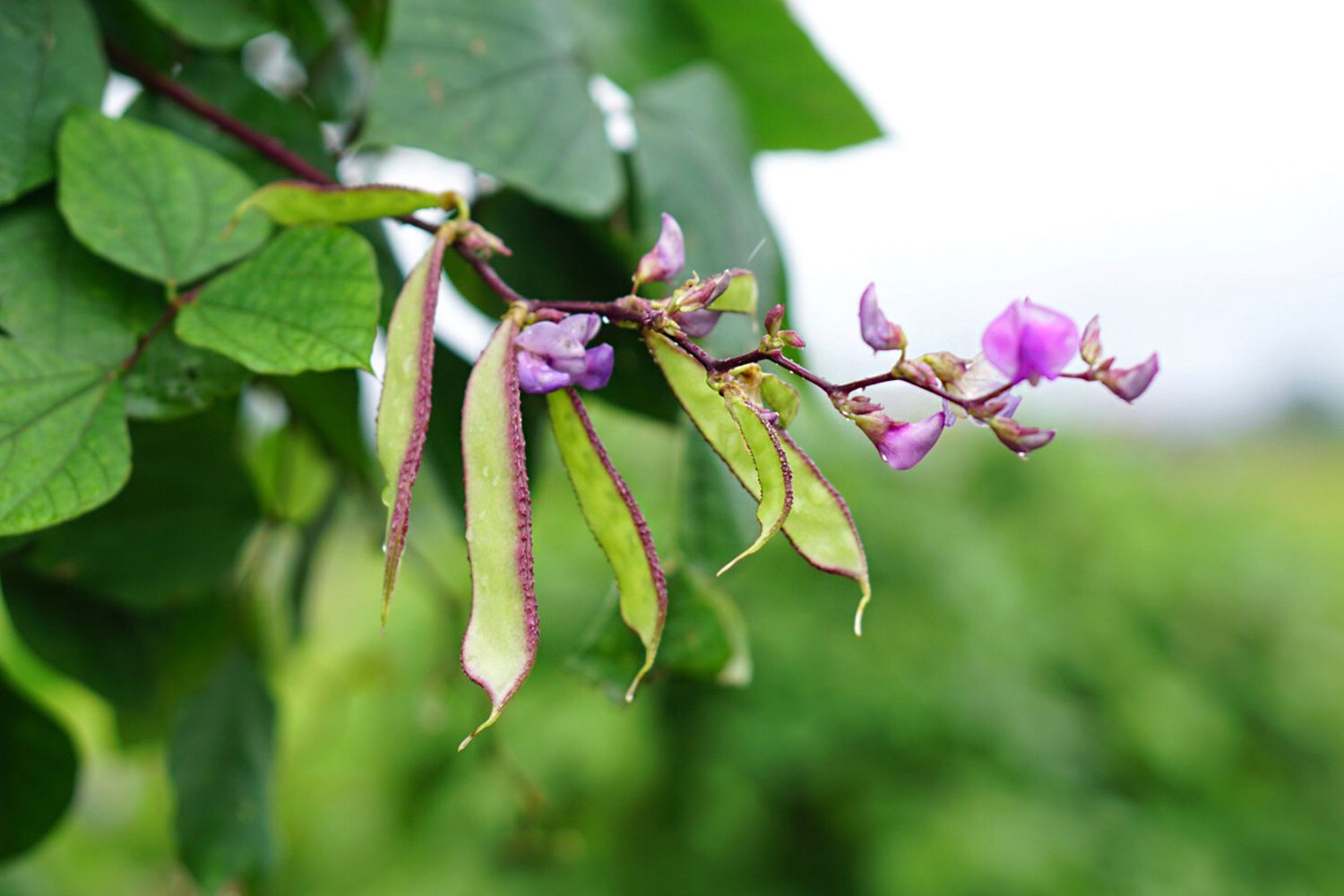
Hyacinth beans are more than just a pretty plant. Known for their vibrant purple pods and lush green leaves, these beans add a splash of color to any garden. But did you know they also pack a punch in the kitchen? Rich in protein and fiber, hyacinth beans are a nutritious addition to meals. They thrive in warm climates and can be grown as ornamental plants or for their edible seeds. Whether you're a seasoned gardener or a curious cook, learning about hyacinth beans can open up a world of possibilities. Ready to dig in? Let's uncover some fascinating facts about this versatile plant.
Key Takeaways:
- Hyacinth Bean is a versatile plant with beautiful flowers and edible beans. It has cultural significance and environmental benefits, making it a valuable addition to gardens and diets worldwide.
- The Hyacinth Bean, with its vibrant flowers and nutritious beans, offers not only beauty but also soil improvement and erosion control. It's a plant with both aesthetic and environmental value.
What is Hyacinth Bean?
The Hyacinth Bean (Lablab purpureus) is a versatile plant known for its vibrant flowers and edible beans. Originating from Africa, it has spread worldwide due to its beauty and utility. Let's dive into some fascinating facts about this unique plant.
Botanical Characteristics
Understanding the botanical aspects of the Hyacinth Bean can help appreciate its uniqueness.
- Scientific Name: The scientific name of the Hyacinth Bean is Lablab purpureus. This name reflects its striking purple flowers and pods.
- Growth Habit: Hyacinth Bean is a climbing vine. It can reach heights of up to 15 feet, making it ideal for trellises and arbors.
- Flower Color: The plant produces beautiful flowers in shades of purple, white, and pink. These flowers are not just pretty; they attract pollinators like bees and butterflies.
- Leaf Structure: The leaves are trifoliate, meaning each leaf has three leaflets. This structure is common in many legumes.
Edible and Nutritional Value
Hyacinth Bean is not just ornamental; it also offers nutritional benefits.
- Edible Parts: Both the beans and young pods are edible. They are often used in various cuisines around the world.
- Nutritional Content: Hyacinth Beans are rich in protein, fiber, and essential vitamins. They provide a nutritious addition to meals.
- Culinary Uses: In many cultures, the beans are used in soups, stews, and salads. The young pods can be stir-fried or steamed.
Cultural Significance
The Hyacinth Bean holds cultural importance in various regions.
- Historical Use: Historically, Hyacinth Beans have been cultivated for over 3,000 years. They were a staple in ancient African diets.
- Symbolism: In some cultures, the plant symbolizes prosperity and abundance. It is often grown in home gardens for good luck.
- Festivals: In India, the Hyacinth Bean is celebrated during the Sankranti festival. It is used in traditional dishes prepared for the occasion.
Environmental Benefits
Growing Hyacinth Bean can also benefit the environment.
- Soil Improvement: As a legume, Hyacinth Bean fixes nitrogen in the soil. This process enriches the soil, making it more fertile for other plants.
- Erosion Control: The plant's extensive root system helps prevent soil erosion. It stabilizes the soil, especially on slopes and embankments.
- Biodiversity: By attracting pollinators, Hyacinth Bean supports local biodiversity. It provides food and habitat for various insects.
Growing and Care Tips
For those interested in cultivating Hyacinth Bean, here are some useful tips.
Hyacinth Bean: A Hidden Gem
Hyacinth beans aren't just pretty plants. They pack a punch with their nutritional value and medicinal properties. These beans are rich in protein, fiber, and vitamins, making them a great addition to your diet. Plus, they have antioxidant and anti-inflammatory benefits.
Growing hyacinth beans is easy. They thrive in warm climates and need minimal care. Their vibrant purple flowers and pods add a splash of color to any garden. But remember, the raw beans are toxic. Always cook them thoroughly before eating.
In many cultures, hyacinth beans are a staple food. They're used in various dishes, from soups to stews. Their versatility in cooking makes them a favorite among chefs and home cooks alike.
So, next time you see hyacinth beans, give them a try. You might just find a new favorite!
Frequently Asked Questions
Was this page helpful?
Our commitment to delivering trustworthy and engaging content is at the heart of what we do. Each fact on our site is contributed by real users like you, bringing a wealth of diverse insights and information. To ensure the highest standards of accuracy and reliability, our dedicated editors meticulously review each submission. This process guarantees that the facts we share are not only fascinating but also credible. Trust in our commitment to quality and authenticity as you explore and learn with us.


